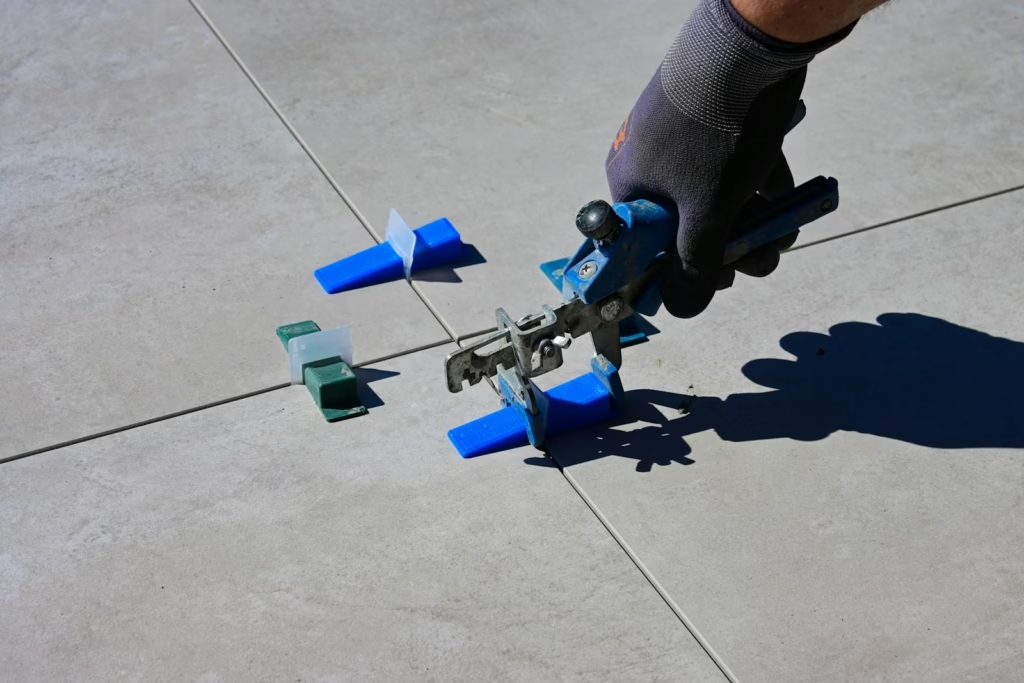In construction, mortar and grout are essential materials used for different purposes. Both are cement-based products but have distinct properties and applications. One major distinction between them lies in their fluidity: mortar is relatively stiff, while grout is highly viscous. In this article, we explore their differences in detail to help you understand their unique characteristics and uses.

Mortar
Definition
Mortar is a mixture of cement, sand, and water, forming a thick paste. This material is primarily used as a binding agent to hold surfaces together, such as bricks, stones, and concrete blocks. The inclusion of lime in some types of mortar improves its workability and durability.
Key Applications
Mortar is widely used in construction for bonding materials. For example, in brick masonry, mortar serves as a strong adhesive that holds bricks together. Additionally, it is employed in plastering work to cover joints and enhance the structure’s appearance.
Example: Mortar is often seen in action during bricklaying, where it plays a crucial role in ensuring structural integrity.
Grout
Definition
Grout, on the other hand, is a highly viscous material made from cement, water, and additional components like epoxy, acrylic, or polymers. Unlike mortar, grout is not adhesive but acts as a filler to seal gaps and joints in construction, particularly in tiling.
Key Applications
Grout is commonly used as a filler material between tiles or to seal cracks. It is also utilized in specialized applications, such as reinforcing dam foundations or filling bedding planes in weak areas. In these cases, grout provides stability and strengthens the underlying structure.
Example: Grout is indispensable in tiling projects, filling the joints between ceramic or stone tiles to ensure a neat finish.
Differences Between Mortar and Grout
A detailed comparison of mortar and grout reveals their distinct properties, functions, and uses. Below are the key differences:
- Material Composition
- Mortar: A mixture of cement, sand, lime, and water.
- Grout: Contains cement, water, sand, and additional materials like epoxy, acrylic, or polymer.
- Water-Cement Ratio
- Mortar: Less water is added, resulting in a thicker consistency.
- Grout: Higher water content makes it more fluid.
- Primary Function
- Mortar: Acts as a binder, holding together bricks, stones, or other masonry elements.
- Grout: Serves as a filler material in tile joints or cracks.
- Stiffness
- Mortar: Relatively stiff and holds its shape.
- Grout: Less stiff due to its higher water content.
- Workability
- Mortar: Easy to handle with a trowel and sticks well during application.
- Grout: Difficult to manage with tools because of its fluid nature.
- Viscosity
- Mortar: Low viscosity, making it ideal for building purposes.
- Grout: Highly viscous, suitable for filling joints and cracks.
- Color
- Mortar: Typically retains the natural color of cement.
- Grout: Available in various colors to match the aesthetics of tiles.
- Types
- Mortar: Includes cement mortar, lime mortar, surki mortar, gauged mortar, and mud mortar.
- Grout: Includes sanded grout, unsanded grout, epoxy grout, furan grout, and acrylic grout.
- Porosity
- Mortar: Non-porous and resistant to water penetration.
- Grout: Porous, retaining water even after hardening.
- Curing
- Mortar: Requires additional water for the curing process to harden.
- Grout: Does not require extra curing; the initial water is sufficient for hardening.
- Setting Time
- Mortar: Takes longer to set.
- Grout: Sets relatively quickly.
- Applications
- Mortar: Used in masonry as a bonding agent and in plastering for aesthetic improvements.
- Grout: Used to fill tile joints, cracks, and reinforce weak ground areas.
Conclusion
While mortar and grout are both integral to construction, they serve distinct purposes. Mortar’s primary role is as a binder in masonry work, whereas grout acts as a filler in tiling and structural reinforcement. Understanding their differences in composition, properties, and applications ensures the right material is chosen for a specific task. Whether you’re laying bricks or sealing tiles, these materials are essential to achieving durability and structural integrity in construction projects.
